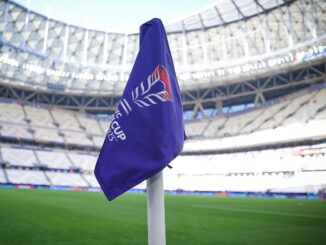
Not for the first time Australia finds itself battling a crisis of identity; caught between who it is and who it wants to be.
On face value Australia has been close to the best performing team at this AFC Asian Cup.
Four games, three wins, one draw and just one goal conceded; the foundations for a serious tilt at a second Asian crown.
But back home, in loungerooms and coffee shops across the country, there are mixed feelings about how the team is performing in Doha.
There are some who are of the view that, in tournament football, the only thing that matters is the end result. How that is achieved is largely irrelevant so long as it is achieved; the ends justify the means.
Then there is a second camp who believe how you win is most important. That means dominating games against so-called weaker opposition, it means creating countless chances and playing with an attacking verve that matches the defensive steel.
Caught in the middle is the national team, who stand a good chance of making their third Asian Cup final in their last four attempts, but seemingly affronted that anyone should question them.
So who is right and who is wrong?

Deja vu
The important thing to remember is that Australia has been here before, and will probably be here again in the future.
The battle of national identity, especially in a nation as young as Australia, is never truly ‘won’ as identities change and evolve over time. What Australia was in the 1980s and not what Australia is in the 2020s.
Nations evolve and football evolves with it.
But you don’t have to go back far to find the last time this debate reared its head, during the tenure of current Tottenham boss, Ange Postecoglou.
After bemoaning the more pragmatic approach of the late Pim Verbeek, and his successor, Holger Osieck, Australia craved more from its national team.
Enter Ange Postecoglou.
As the world now knows, Postecoglou is a disciple of attacking football; of playing on the front foot and never backing down.
And for a while the nation agreed, falling in love with a new generation of Socceroos who opened eyes at Brazil 2014 before clinching the Asian Cup on home soil six months later.
But during qualification for Russia 2018, this ideological battle waged on as results started to slide and the prospect of missing the World Cup became a distinct possibility.
In the end pragmatism won, Postecoglou quit and the nation moved on. But just over half a decade later, we find ourselves back at the point, debating ideologies and how the national team achieves its results.
Always the underdog
It’s a quirky national trait that Australians, in any sporting theatre, thrive on being the underdog.
When Graham Arnold talks about ‘Aussie DNA’ – a phrase that infuriates the football purists of Australia – it’s this to which he is referring. It’s innate in every Australian, especially our footballers, who are constantly having to prove they belong in the upper echelons of the game.
It’s this mentality Arnold was able to so successful harness at the World Cup in Qatar just over 12 months ago, helping the nation to its greatest ever result at a World Cup, with two wins in the group stage, and a narrow, ‘honourable’ loss to eventual champions Argentina that felt like a real opportunity missed, so successful had Arnold and the team harnessed their ‘Aussie DNA’.
But, it goes without saying, the Asian Cup is not the World Cup.
While it’s easy to harness the underdog spirit against the likes of France and Argentina, its incredulous to do so against India or Indonesia.

And herein lies the battle.
This is a team built and moulded by Arnold over an almost six-year period. Players have come and gone, but the core essence of this side remains the same – Aussie DNA.
But what does this side have when it doesn’t have the underdog spirit to call upon?
That is the question being asked, and so far it is one that isn’t being well answered as Australia has generally laboured to wins against India, Syria and Indonesia, and held to a 1-1 draw with an Uzbekistan side missing their best player.
Twelve shots on target across four games doesn’t exactly scream attacking football, and while credit needs to go to the opposition for the way they have defended against Australia, the Socceroos’ lack of creative spark has also made that task somewhat easier than it could’ve been.
The retirements of Aaron Mooy and Tom Rogic, and the disappearance of Ajdin Hrustic, have weakened Australia’s attacking stocks.
Still only 27, Hrustic looked for all money like being Australia’s chief creative weapon for the foreseeable future after breaking through in the previous World Cup cycle, but has faded into obscurity as injury and a lack of game time in Italy curtailed his career.
While Arnold may bristle at the criticism, it’s played into his hands perfectly by giving him the opportunity to reprise the siege mentality that was so successful last time the national team was in Qatar.
‘No one thinks we can do it…’
‘Us against them…’
It’s about proving people wrong and playing with a chip on your shoulder. Arnold is an expert at creating this environment, he’s done so everywhere he has gone, and he did so to great success at the World Cup.
But it does raise an important question – is constantly pitting the national team against its own fan base the way to build unity and connection with that very same fan base?
Is there a risk that by almost manufacturing division to create a siege mentality that you create a real divide in the future? And what does it say about the evolution of this team and football in Australia that it needs to hark back to this mentality to get the best out of its team?
They are questions, at the moment, without any answers as the debate about style or substance continues to roll on.
Listen to the latest The Asian Game Podcast LIVE from the AFC Asian Cup 2023




